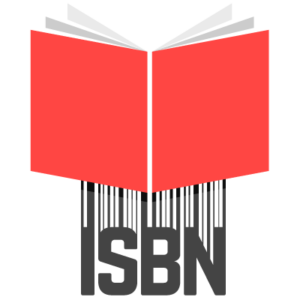Study on students' satisfaction with using Chatbot on Facebook's messenger platform to learn Chinese vocabulary
DOI:
https://doi.org/10.54855/paic.2318Keywords:
Chatbot, Facebook, vocabulary, Chinese vocabularyAbstract
In the context of the ever-evolving scientific and technological revolution and the strong globalization trend, proficiency in foreign languages becomes extremely important because this is the bridge between countries in all areas of life. Currently, using some technological applications in learning foreign languages is becoming a new trend in the digital edge. A chat box product (Chatbot) integrated into Facebook's Messenger platform helps students majoring in Chinese language review vocabulary in Boya Chinese textbooks at elementary and intermediate levels, including three main functions: learning vocabulary, checking an online dictionary and reviewing vocabulary. This research is conducted in order to assess students' satisfaction with the functions of Chatbot with the participation of 101 students majoring in the Chinese language at Hanoi University of Industry. The result indicates that Chatbot stimulates students' interest with user-friendly configuration to improve students' academic performance. The higher Chinese proficiency learners have, the more stringent requirements they have for study methods and the capacity to provide vocabulary from Chatbot. This application's preface significantly impacts learners' emotions during their learning progress.
References
Bellman, R. (1978). An introduction to artificial intelligence: can computers think?, Thomson Course Technology.
Chen, H. L., Vicki Widarso, G., & Sutrisno, H. (2020). A chatbot for learning Chinese: Learning achievement and technology acceptance. Journal of Educational Computing Research, 58(6), 1161-1189.
Do, M. V. Xây dựng chatbot bán hàng dựa trên mô hình sinh (Doctoral dissertation, MS thesis, Graduate Univ. of Sc. and Tech., Hanoi, 2020. Accessed on: 10 Sep, 2020.[Online]. Available: http://gust. edu. vn/media/27/uftai-ve-tai-day27665. pdf).
Kumar, R., & Ali, M. M. (2020). A review on chatbot design and implementation techniques. Int. J. Eng. Technol, 7(11).
Ly, H. K. (2019), Giáo trình Hán ngữ Boya sơ cấp tập 1, Vietnam National University Publishing House.
Ly, H. K. (2019), Giáo trình Hán ngữ Boya sơ cấp tập 2, Vietnam National University Publishing House.
Ly, H. K. (2019), Giáo trình Hán ngữ Boya trung cấp I - tập 1, Vietnam National University Publishing House.
Ly, H. K. (2019), Giáo trình Hán ngữ Boya trung cấp I - tập 2, Vietnam National University Publishing House.
McCarthy, J., Minsky, M. L., Rochester, N., & Shannon, C. E. (2006). A proposal for the dartmouth summer research project on artificial intelligence, August 31, 1955. AI magazine, 27(4), 12-12.
Nghia, T. Đ. (2020), Xây dựng giải pháp Chatbot bán hàng tự động iBotsale trên miền tiếng Việt dựa trên trích chọn thông tin và phân loại ý định, The 23rd National Conference: Some problems of Information Technology and Transformation
Rich, E., Knight, K., Winston, P. H., Luger, G. F., Jackson, P., Nilsson, N. J., ... & Schalkolf, R. J. (1991). Artificial Intelligence TATA McGRAW-HILL.
Thuy, N. T., Thuy, H. Q., Hieu, P. X., & Thanh, N. T. (2018). Trí tuệ nhân tạo trong thời đại số: Bối cảnh thế giới và liên hệ với Việt Nam. Tạp chí Công Thương.
Tien, N. T. (2019). Nghiên cứu và xây dựng chatbot hỗ trợ người dùng trong ngân hàng (Doctoral dissertation), University of Engineering and Technology, VNU.
Downloads
Published
How to Cite
Issue
Section
License
Copyright (c) 2022 Dinh Bich Thao, Ung Thuy Linh, Nguyen Nhan Ha, Nguyen Thi Ha Thuy

This work is licensed under a Creative Commons Attribution 4.0 International License.
Copyright
The copyright of all articles published in the Proceedings of the AsiaCALL International Conference (paic) remains with the Authors, i.e. Authors retain full ownership of their article. Permitted third-party reuse of the open access articles is defined by the applicable Creative Commons (CC) end-user license which is accepted by the Authors upon submission of their paper. All articles in the aicp are published under the CC BY-NC 4.0 license, meaning that end users can freely share an article (i.e. copy and redistribute the material in any medium or format) and adapt it (i.e. remix, transform and build upon the material) on the condition that proper attribution is given (i.e. appropriate credit, a link to the applicable license and an indication if any changes were made; all in such a way that does not suggest that the licensor endorses the user or the use) and the material is only used for non-commercial purposes.









